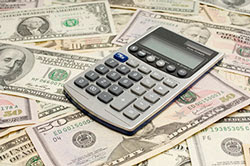By Joe Pilotta
In a January 2006 RBR&TVBR, I wrote an article on PPM, "What came first, the meter or the people?"
See it here-page 18 http://www.rbr.com/pdf/mag/mag-jan06.pdf
Where starting with a big basic premise of all communication, "there are distinctions between seeing and watching, speaking to and speaking with, and listening versus hearing." My conclusion was "Even with technical perfectibility of the PPM or the best sampling technique imaginable is impossible for PPM to discriminate listening from noise because that requires a human differentiation. Therefore, at present, the PPM as an objective rating tool is impossibility."
Well, Arbitron heard or listened and offered Time Spent Exposed (TSE); is that time spent hearing, listening or is it an opportunity to be heard or listened to? TSE exposed replaced time spent listening. Since listening implies actual listeners and exposure means maybe heard, Radio is giving up listeners for exposures. In an ROI, accountability and engagement focused world to loose listeners and substitute exposures is a step backward and not forward…but at least they get this via electronic collection. The exposure model has been widely criticized by the ARF, ANA, and 4A's. Is that what the engagement measure was to remedy?
According to an RBR article (6/25/07 RBR #123), TSE is a measure or surrogate for engagement or loyalty. It appears Arbitron, or someone has not been reading the industry research or participating in all the vanguard task forces. According to ARF, the definition of engagement is opportunity-to-purchase and the new loyalty measurement in vogue is the Reichhold net promoter scores, i.e., would you recommend x to y.
Well, I don't remotely see how TSE relates to engagement or loyalty, unless paying a premium price for the PPM service is an indicator of loyalty. However, I don't think loyalty to the PPM metric is shared by radio networks. At the level of sheer sample size, which would have utility to radio stations, I count 28 stations participating in Philly, with a sample of 1476 respondents. Well, all stations being equal (which is not so) each station has an average sample of 53 persons to base their case for advertising dollars. The sample then translates as a minuscule 3.1 persons per age and sex cell. Now, of course, resorting to AQH hours will bring these measures up, but not significantly. Well, I am sure there's a good reason.
In short, a measurement problem is not responsible for the ills of radio; rather there are several inherited institutional ills.
With TV going down in eyeballs, it can go up in CPM by 5%, and everyone falls in line. TV claims to have 98% of the market, radio 96%, yet, radio is going down in the price it commands. TV is just sexier between CMO perks and C-Level vanity; TV will always be bought. Agencies want to pimp TV, corporate TV junkies engage in infantile narcissism, "but I want it."
Radio needs a relationship with its clients. Unfortunately, it is only the agencies who are clients and they are out of touch with the consumers. They actually believe the consumer is a cultural dope, to which anything can be sold to regardless of the consumer circumstance.
Is There a Remedy?
1. Radio needs to go into business development and jettison the agency love affair. Relationships are the key to the bottom line. Radio has a great consumption power but they will never set the story out with "potential exposures."
2. Radio needs to latch on to the hottest topic in town: word-of-mouth. Radio often is either directly listened to or as background, but our work at BIGresearch shows that background media is a catalytic to the foreground media to influence a purchase decision, e.g. going online, radio and background, radio becomes a catalyst for the online advertising to influence purchase decision.
3. Radio synergy and radio audiality art chief triggers of search marketing, and can be developed to create word-of-mouth with mobile media in a very powerful way. Influencing a purchase decision of a customer thrills a retailer more than a demographic or TSE.
4. Radio used to pride itself on involvement, which was the term in use before engagement. Now an involvement measure which leads to purchasing is the next step for radio.
So in brief, what is the problem? Measurement – no. Lack of leadership/vision in the radio industry – partially. The agencies – it would be easy to say yes. The answer lies in the very name. Radio has forfeited its right to be its own agent. Will they reclaim it? How can they reclaim it when the new surrogate for listeners is exposures?
Joe is VP of BIGresearch and a member of Word of Mouth Association (WOMMA) Standards and Metric Committee and the ARF
Long Term Advertising Effects Committee. He can be reached at [email protected]




